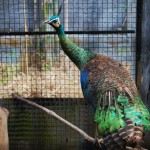PRIMATES
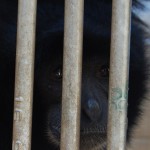 Siamang (Symphalangus syndactylus)
Siamang (Symphalangus syndactylus)
Siamang is a tailless, arboreal lesser ape. It is native to Sumatra in Indonesia, Peninsular Malaysia and a small area of Southern Thailand. Two young siamangs came to the rescue centre on December 9, 2005. They are both male and around 8 years old now. At this age in the wild they would leave their family group. Our siamangs will hopefully be transferred to a rehabilitation facility at Wey Kambas National Park in Sumatra, and eventually released back to the wild.
.
Javan lutung (Trachypithecus auratus)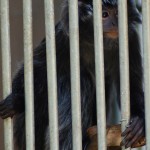
Our female Javan lutung was rescued in 2010. This species is endemic to Indonesia, and can be found on the islands of Java, Bali and Lombok. Lutungs, also called langurs or leaf monkeys, are social animals, living in groups of around seven individuals, with one or two adult males in the group. Javan lutung is a leaf-eater with a specialised stomach for plant matter digestion. It also consumes fruit, flowers, flower buds, and insect larvae. We are working on finding a suitable place for this lovely lutung.
.
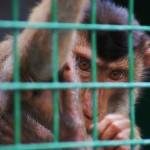 Southern gris-tailed macaque (Macaca nemestrina)
Southern gris-tailed macaque (Macaca nemestrina)
Southern pig-tailed macaque has a short tail that is carried half-erect and somewhat resembles a pig’s, hence its name. This species is found in Brunei, Indonesia (Bangka, Kalimantan Borneo, and Sumatra), Malaysia (Peninsula Malaysia and Sabah and Sarawak Borneo), as well as southern peninsular Thailand. We have three Southern pig-tailed macaques, two males and one female at BWRC. These macaques will hopefully be transferred to Ciapus Primate Center in Java, which has a focus on their rehabilitation.
.
Javan slow loris (Nycticebus javanicus)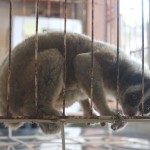
Our newest primate arrival was a confiscated Javan slow loris in June 2012. It seems to be in good health and is staying in quarantine. After that it will be transferred to a newly built enclosure. Slow lorises are nocturnal and arboreal. They feed on sap and floral florescence as well as on gum and insects.
.
BIRDS
We have almost 20 species of birds at BWRC. Some have broken wings or are unwilling to fly due to long confinement in small cages. Some of the birds are in the process of rehabilitation, and can eventually be released in Bali. Others are waiting to be transferred to centres at their place of origin.
Grey-headed fish eagle (Ichthyopaga ichthyaetus)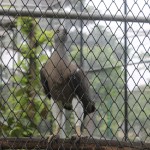
Grey-headed fish eagle is a bird of prey found in Southern Asia from India and Sri Lanka to Southeast Asia. It feeds primarily on fish, but it will also take other prey, including reptiles. The eagle at BWRC is now in a rehabilitation cage and is flying and hunting very well. It should be transferred to Sumatra or Kalimantan for a release as the species is not currently present in Bali.
.
White-bellied sea eagle (Haliaeetus leucogaster)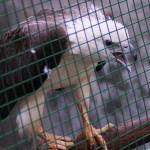
White-bellied sea eagle can also be found from India and Sri Lanka through Southeast Asia to Australia. It lives near coasts and major waterways, and is an opportunistic feeder. The eagle at BWRC is unable to fly due to an unknown cause and cannot be rehabilitated before we find out the cause.
.
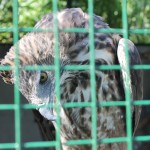 Changeable hawk-eagle (Nisaetus cirrhatus)
Changeable hawk-eagle (Nisaetus cirrhatus)
The changeable hawk-eagle is a medium-large raptor with a large range from India to Southeast Asia. Some subspecies have crests while others are crestless, hence the name “changeable”. Some subspecies are also dimorphic. This makes precise identification difficult. The eagle at BWRC does not have a crest.
.
Brahminy kite (Haliastur indus)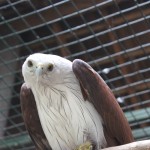
Brahminy kite is a distinctive bird of prey with chestnut colored plumage with white head and breast, and black wing tips. Det er allment spres fra India gjennom Sørøst-Asia til Australia. For øyeblikket har vi to Brahminy drager på BWRC. If their rehabilitation is successful, they could be released here in Bali.
.
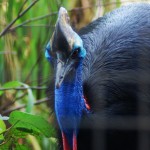 Southern cassowary (Casuarius casuarius)
Southern cassowary (Casuarius casuarius)
Southern cassowary is a large flightless bird found on the island of New Guinea (Indonesia & Papua New Guinea) and north-eastern Australia. The Southern cassowary is one of three cassowary species in New Guinea, where they are heavily hunted, captured and traded close to populated areas. Cassowaries are of high cultural importance, and constitute a major food source for subsistence communities.
.
Victoria crowned pigeon (Goura victoria)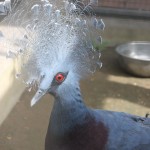
Victoria crowned pigeon is likely the largest of all pigeon species. It’s a steely bluish-grey bird with striking red eyes and a large, white tipped, fan-shaped crest of feathers on its head. Arten finnes bare noen nordlige deler av New Guinea(Indonesia & Papua New Guinea). The population is declining due to habitat loss and hunting for meat as well as feathers.
.
This Galliform bird used to be common and widespread through Southeast Asia but due to habitat loss and fragmentation its numbers are rapidly declining. In Indonesia, the nominate subspecies, Java peafowl (P.m. muticus) is endemic to the island of Java. We have a pair of these beautiful birds at BWRC.
.
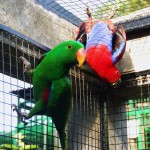 Eclectus parrot (Eclectus roratus)
Eclectus parrot (Eclectus roratus)
Eclectus parrot is native to the Solomon Islands, New Guinea, northeastern Australia as well as Sumba and the Maluku Islands of Indonesia. Det er spesielt for sin ekstreme seksuelle dimorphism; de fargelegger mellom kjønnene er helt annerledes, hanner er lys grønn og hunner lyse rødt.
.
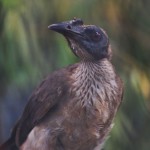 Helmeted friarbird (Philemon buceroides)
Helmeted friarbird (Philemon buceroides)
Helmeted friarbird belongs to a family of honeyeaters and is native to Indonesia, Australia, Papua New Guinea and Timor-Leste. In Indonesia it can be found in the Lesser Sunda Islands (Nusa Tenggara), except in Bali. We have a group of these birds at BWRC. En habitat vurdering blir gjort på naboøya Lombok for en mulig utgivelse side.
.
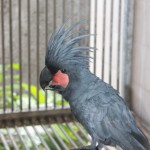 Palm kakadue (Probosciger aterrimus)
Palm kakadue (Probosciger aterrimus)
Palm cockatoo is yet another species found in New Guinea (Indonesia & Papua New Guinea) and northeastern Australia. The palm cockatoo is a large, smoky-grey, almost black bird with a distinctive red cheek patch. This cheek patch changes colour; it can be very pale in sick birds and bright red when the bird is very excited or alarmed.
.
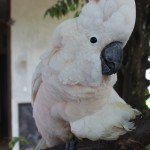 Salmon-crested cockatoo (Cacatua moluccensis)
Salmon-crested cockatoo (Cacatua moluccensis)
Salmon-crested cockatoo, also known as Moluccan cockatoo, is an endemic species to South Moluccan islands. Nesten alle de gjenværende bestanden finnes på øya Seram. This species has suffered from illegal bird trade as well as habitat loss.

